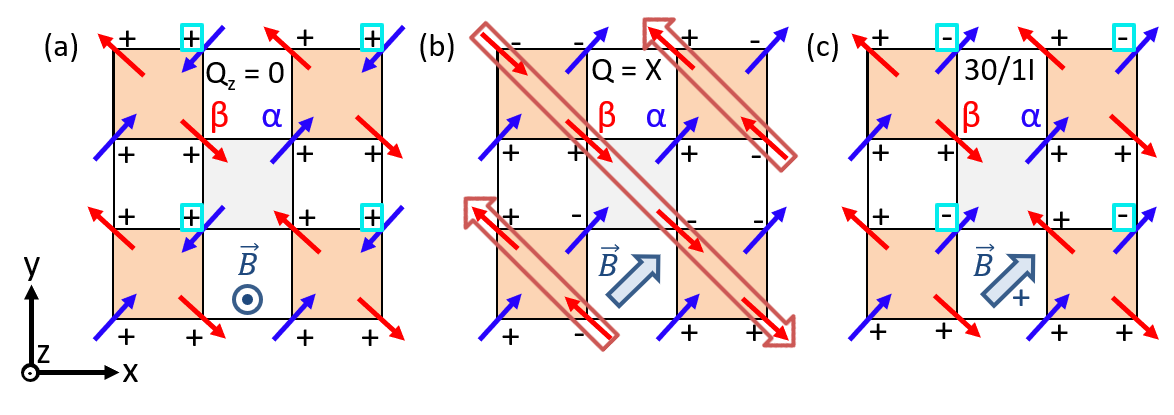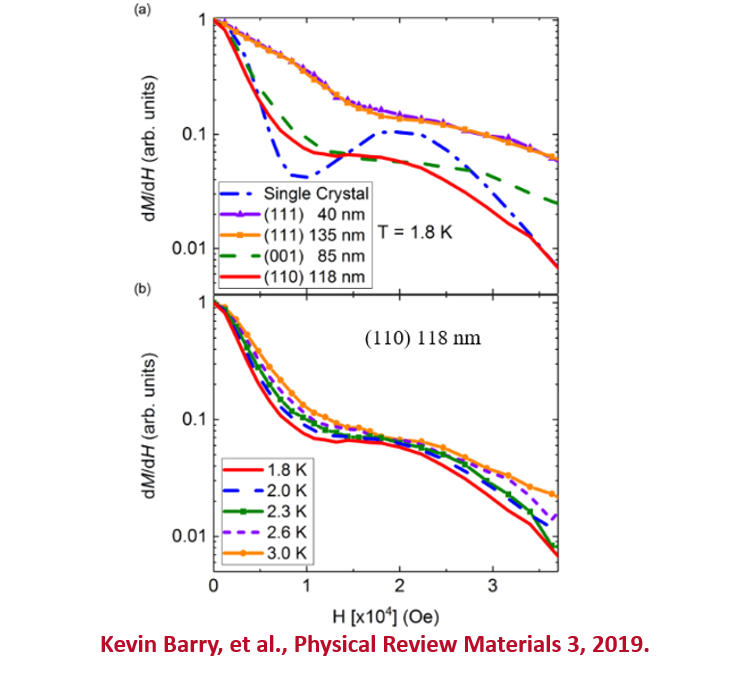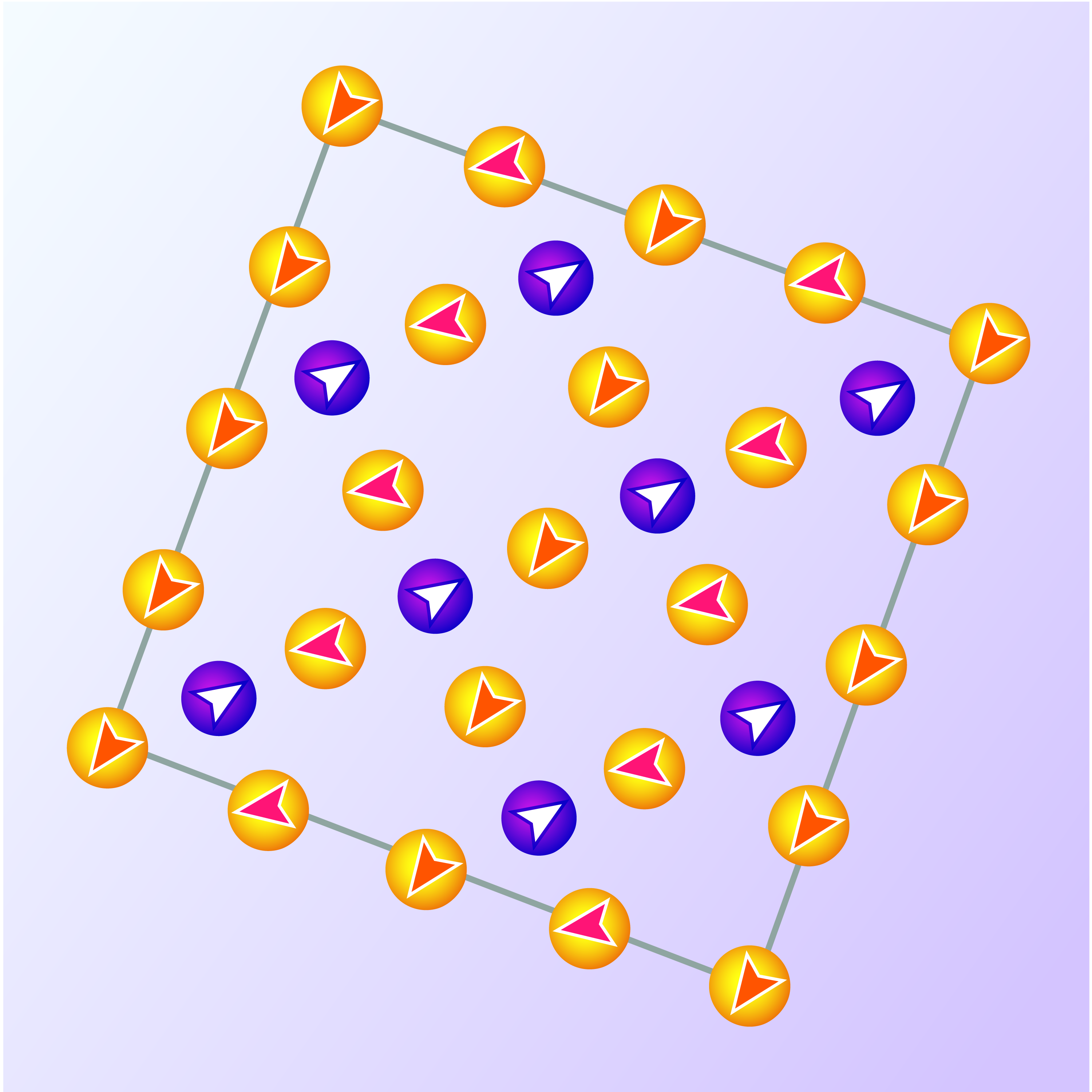
Geometrically frustrated magnets have spins residing on a triangular (2D) or tetrahedral (3D) lattice. A combination of the lattice geometry and magnetic interactions (antiferromagnetic nearest neighbor exchnage interactions and ferromagnetic long range dipolar interaction) govern the formation of various noncollinear spin textures below T = 2 K. Spin ice magnetic phases displayed as a 2D projection of the Ho2Ti2O7 unit cell down te z-axis. (a)Qz=0 , (b)Q=X (a 50/50% mixture of Qx=0 and Qy=0), and (c) 3-out/1-in textures. We use &alpha and &beta to indicate the blue and red spin sub-lattices. For each phase the field direction is shown, and the +/- signs indicate the spin directions along the z-axis. The open arrows in (b) highlight the antiferromagnetic coupling of the &beta spins. These spin textures have been observed in canocial spin ice systems (Ho2Ti2O7).
As presented in "Anand et al., Nature Communications volume 13, Article number: 3818 (2022) ", the single-ion anisotropy and magnetic interactions in spin-ice systems give rise to unusual non-collinear spin textures, such as Pauling states and magnetic monopoles. The effective spin correlation strength (Jeff) determines the relative energies of the different spin-ice states. With this work, we display the unique capability of capacitive torque magnetometry (CTM) in characterizing the magneto-chemical potential (MCP) associated with monopole formation. We build a magnetic phase diagram of Ho2Ti2O7, showing that the field-induced magnetic phase transitions cannot be described by a single value of Jeff. Rather, the MCP depends on the spin sublattice (α or β), i.e., the Pauling state, involved in the transition. Monte-Carlo simulations using the dipolar-spin-ice (DSI) Hamiltonian support our findings of a field-dependent MCP, but the model underestimates Jeff for the β-sublattice. The inclusion of long-range exchange terms in the Hamiltonian is needed for a full description of spin ices.
Magnetization measurements of HTO thin films: One of the hallmark signatures of the presence of the spin ice is the development of a magnetization plateau at intermediate fields when the magnetic field is applied along the [111] direction. As presented in "Barry et al. Phys. Rev. Materials (2019)" we find that for thin films the spin ice Physics is modified. Disorder inherent to the thin films appears to play a major role in the suppression of the Q=X phase.

Spinel vanadates are ideal testbeds for probing orbital physics in frustrated antiferromagnets, including how orbital order can lift spin degeneracies. One feature of the spinel vanadate system is that the inter-vanadium distance controls proximity to a predicted localization-itinerant crossover which, in turn, impacts the magnetic state of the system. CoV2O4 is an insulator with an orbital triplet degree-of-freedom that is the closest known material to the predicted delocalization-itinerant transition. Yet bulk CoV2O4 defies predictions, showing orbital degeneracy that persists to the lowest temperatures. The Beekman group grows spinel vanadate thin films. Magnetization, x-ray, and neutron scattering experiments have revealed unmistakable signatures of spin canting associated with long-ranged orbital order in the form of a planar noncollinear spin texture (see figure, Co = purple; V = orange). This implies that thin film samples are deeper into the insulating state than bulk samples, likely due to epitaxial strain. For more details see "Thompson et al. Phys. Rev. Materials (2018)"
